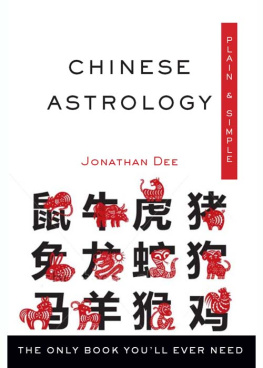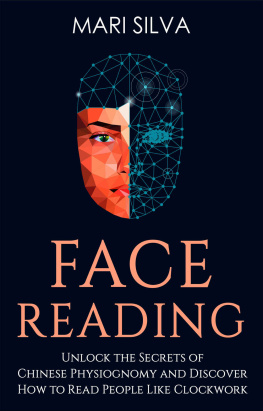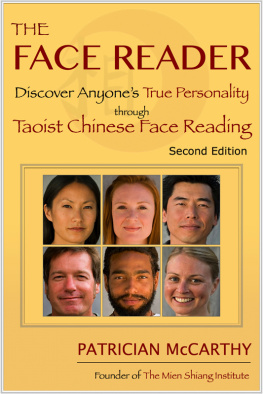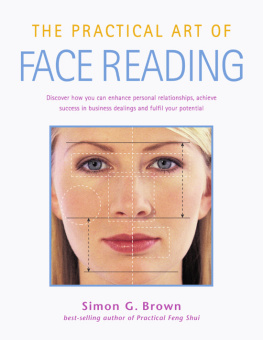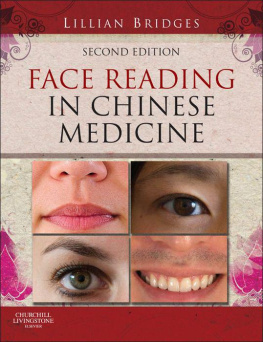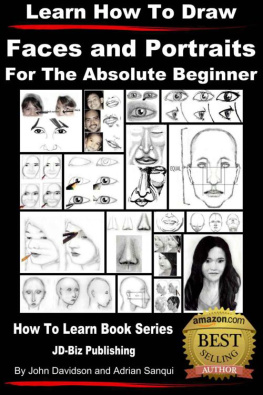

Copyright 2005, 2018
by Jonathan Dee
All rights reserved. No part of this publication may be reproduced or transmitted in any form or by any means, electronic or mechanical, including photocopying, recording, or by any information storage and retrieval system, without permission in writing from Hampton Roads Publishing, Inc. Reviewers may quote brief passages.
Previously published in 2005 as Simply Face Reading by Zambezi Publishing Limited, Devon, UK.
Illustrations 2018 Hampton Roads Publishing Company, Inc.
Cover design by Jim Warner
Interior design by Kathryn Sky-Peck
Hampton Roads Publishing Company, Inc.
Charlottesville, VA 22906
Distributed by Red Wheel/Weiser, LLC
www.redwheelweiser.com
Sign up for our newsletter and special offers by going to www.redwheelweiser.com/newsletter/
ISBN: 978-1-57174-784-6
Library of Congress Cataloging-in-Publication Data
Names: Dee, Jonathan, 1957-2010, author.
Title: Face reading plain & simple / Jonathan Dee.
Other titles: Face reading plain and simple
Description: Charlottesville : Hampton Roads Pub., 2018.
Identifiers: LCCN 2018003345 | ISBN 9781571747846 (5.5 x 8 pbk. : alk. paper)
Subjects: LCSH: Physiognomy.
Classification: LCC BF851 .D385 2018 | DDC 138--dc23
LC record available at https://lccn.loc.gov/2018003345
Printed in the United States of America
IBI
10 9 8 7 6 5 4 3 2 1
Contents
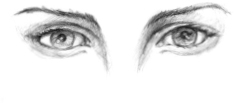
Introduction
T he Chinese art of face reading, or kang xiang as it was originally known, has a very long history indeed. The ancient sages who formulated this practice are long forgotten, having lived more than two thousand years ago. Even so, they drew on the core beliefs of oriental philosophy to provide the basis for this fascinating study. Even though face reading originated in China, it does not apply only to oriental features. In fact, ethnic type is not important, because face reading's rules and interpretations can be applied to all racial groups equally.
In face reading, like Chinese astrology, feng shui, and oriental medicine, we find Chinese concepts that have become familiar, such as yang and yin and the five elements of wood, fire, earth, metal, and water. In fact, face reading has a great deal in common with feng shui, because in this art, the human face is regarded as a landscape with five mountainsthe brow, the nose, the two cheekbones, and the chineach symbolically associated with one of the five elements. This facial landscape also possesses four riversthe eyes, the nostrils, the ears, and the mouth. Each feature is a component in this landscape and each is interpreted accordingly.
One can find each year of life marked on the face. The traditions of Chinese face reading state that no less than ninety-two age positions are dotted around the face. Apart from these, there are also twelve Palaces of Fortune, which give information about specific issues such as partnerships, career, wealth, and health.
Even without this knowledge, we all routinely assess the personality of others by their faces. However, it is not usually the physical features of the face that we assess, but the transitory nature of the expressions. In Chinese face reading, it is the actual formation of the features, their balance, and their symmetry that are the important factors, as well as the overall shape of the face.
There are five basic face shapes, each associated with one of the five elements. As well as these, there are two variations known, respectively, by comparisons with a bucket and a volcano.
The shape of individual features has the greatest complexity. There are twenty-three basic shapes of eyes, twenty-three conformations of eyebrows, thirteen types of ears, thirteen basic nose profiles, and nine types of mouths. I describe each one in the pages of this book, as well as other features, such as the cheekbones, the width and height of the brow, the cheek lines, or fa ling, and the philtrum, or jen chung.
It is somewhat unfortunate that the ancient Chinese sages who formulated face reading were extremely sexist. However, although most of the traditions of this ancient art are concerned with the interpretation of masculine features, they can be applied to female faces too. While we are on the subject, throughout the book the pronouns he and his have been used. I assure you that this is not an indication of the author's sexist attitudes; it is simply a method to avoid the awkwardness of writing he or she or his or her repeatedly.
Every face has its own story to tell, and the art of kang xiang will show you how to read every feature, line, and wrinkle and discover aspects of the personalities of your family and friends that you never knew existed. After all, Chinese face reading literally demonstrates that one's features are an open book!
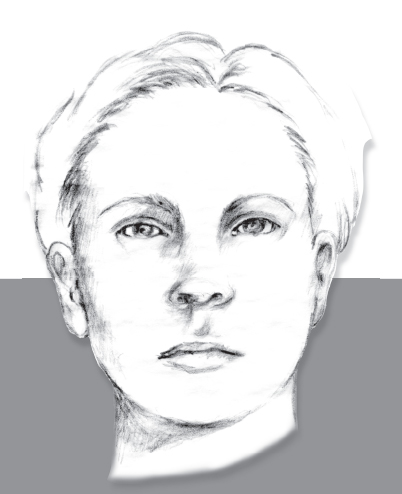
The Divisions of the Face
T he ancient Chinese sages divided the face into a bewildering number of sections. There are no fewer than 130 individual physical features that can be interpreted. It's a good thing that we don't have to concern ourselves with each one of them; for a beginner, it is more than enough to start with the three basic regions dividing the face into horizontal sections.
The Three Primary Divisions of the Face
The Celestial Region or Upper Zone
The celestial or heavenly facial division occupies the area of the brow. It extends across the upper part of the face between the hairline and the eyebrows. A wide, well-proportioned forehead is considered to be generally fortunate. However, for a brow that is too wide-giving the whole face the impression of being a downward-pointed trianglethe outlook is not that good for the love life. If the brow is smooth, even, clear, and free of blemishes, it suggests a happy childhood, a fulfilling home life, and a supportive, loving family. On the other hand, the opposite is the case if the celestial region appears to be lumpy or scarred or possesses a dull, grayish skin tone.
The celestial region is further subdivided into three horizontal areas (see ).
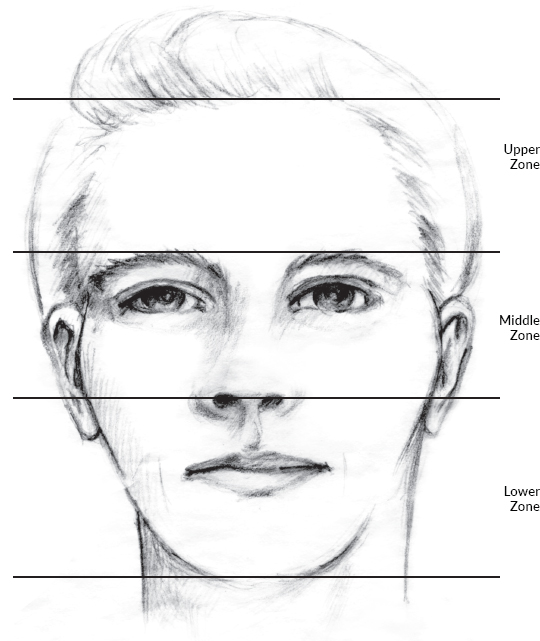

The three subdivisions of the Upper Zone
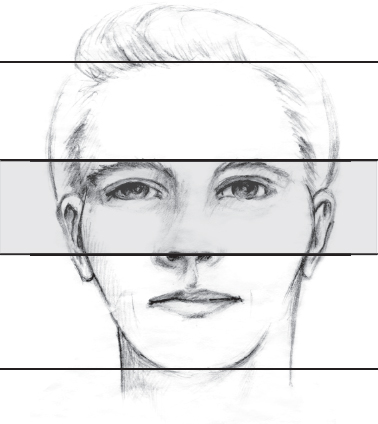
The Region of Self-Will or Middle Zone
The region of self-will is otherwise referred to as the human region or the region of humanity. It extends across the central portion of the face and is home to the eyes, nose, cheekbones, and ears. Ideally, each of these features should be well proportioned in relation to each of the others. The more regular the features in this area, the more settled the individual. Any feature that is disproportionately large will have an unfortunate effect, especially in affairs of the heart.
Next page



